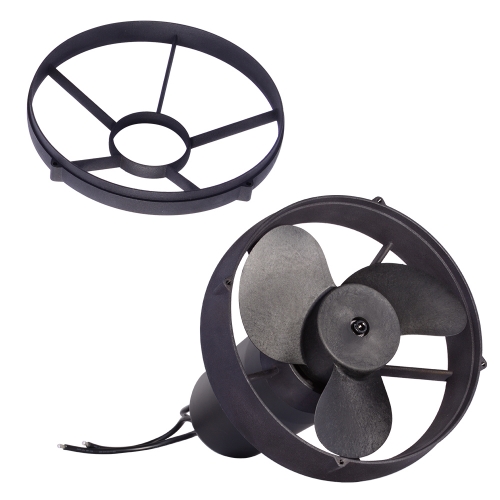This is the Chinese one I’ve seen.
The one posted in this thread looks more like the FR drive unit to me.
But, it won’t be long before the Chinese are making all this stuff.

This is the Chinese one I’ve seen.
The one posted in this thread looks more like the FR drive unit to me.
But, it won’t be long before the Chinese are making all this stuff.

As explained by @Jezza, Lift was the first to use a direct drive inrunner motor. At that time David was running a geared pod (the second picture posted above is a geared drive).
We think that David indeed reverse engineered the Lift motor and even made it beter. He then got a deal with Lift to manufacture this new motor for them too. I posted some photos showing that lift & FR motors are exactly the same in 2019.
The last posts from FR clearly shows that David isn’t hiding this fact anymore. He says “for lift and FR”
This was one of the fist pod David made, one geared unit, before going direct drive.
Ah. Thank you for the explanation. Makes since to me.
Indeed 
They won’t be able trust me. I am working hard to make a direct drive inrunner motor. It cost me way more than $500 for 1 piece (that’s why FR motor isn’t cheap). Chinese won’t be able to make such quality with a low price. I am aiming the best efficiency you can get with this diameter.
I have both prop one from the first geared setup high pitch , very nice for speed and low rpm , and the second one for the direct drive , lot of thrust and smooth , both are fine , easier on the second one for learning …
I forgot to add, as stated by @Alexandre, the prop is too thin to be 3D printed. You should CNC mill it. It won’t cost you a fortune but you will get a way better efficiency / speed.
You mean you have a prop like the one I posted above ? Would you take some pictures ?
There isn’t any oil in it. He treats the inside with something like corrosion X and then drains it. It’s just to coat the internals in case water does get in.
I have done the same with all my drive units. Treat them with corrosion X just in case any water gets in. That way nothing corrodes or shorts out.
The two links below prove they are trying very hard.
@Flightjunkie your Hobbyporter motor specs are here: am I the only one to think the propeller looks very similar to the FR one ?
https://hobbyporter.com/hobby-porter-5370-brushless-under-water-thruster-150a-esc-combo_p1825.html

The Chinese efoil I had in mind was this one, the Alibaba shop is called Rupel Water Sport. Motor and propeller look very similar to FR or LIFT:
https://www.aliexpress.com/item/33061818254.html
Well that is what you say , there is only 2 ways to know that , so I guess you have open at least two motor to say that there is nothing inside … I won’t write anymore about that , everyone that information as they want
I can’t understand guys 
 I was speaking about the Flite motor, then mike answered me, alexandre answered us, and you answered alexandre, but I think you are talking about the FR motor, right ? Or do you have a Flite motor laying around lol ?
I was speaking about the Flite motor, then mike answered me, alexandre answered us, and you answered alexandre, but I think you are talking about the FR motor, right ? Or do you have a Flite motor laying around lol ?
I think David is using some kind op high temp epoxy and no corrosion X. Corrosion X does not dry.
I have no clue how they did, but trust me it’s juste like the copy of a Iphone. Look how the blades are thin at the root. I am pretty sure they will break under load.
Please consider : making a good prop asks CFD analysis. Those software are not cheap and you have to put lot of work & simulations to get decent result.
Same goes for a motor. You have to make magnetic flow simulations. All these softwares are expensive and really hard to master. Chinese won’t put money on it to sell a $300 motor.
I will open my FR motor and report back.
I wont be able to be ready for February I think. I will open a thread when I get some test units. Looking forward to the other custom inrunners, coz I don’t understand how the others are targetting $350 for it when it cost at least the double to manufacture 

I am 10000% sure it has nor oil nor corrosion X inside. Only a thin film of high temp epoxy. But still curious lol.
Take a 3mm thick aluminium foil, 2D CNC it into blade shapes (petals), stamp the blades to give them a twisted shape, make the leading edge round, solder them to an extruded hub (TIG ?) there you are…
Then we don’t know what those flat (not flush) blades will be like in the water.
Sell it 20-30usd, if you get 80% of the efficiency of a FR or LIFT prop at 3500rpm, it will still be a massive success. Will they resist under load ? Only tests will tell.
This happened in the kitesurfing industry circa 2010 when F-one starded using thin 3-4mm asymetrical foil fins instead of 8mm thick flush G10 CNCed fins. The Unibox has been a success ever since.
It’s like a corrosion X coating, just not corrosion X itself.
It can be wiped so it’s not an epoxy.
I don’t have a fliteboard motor.